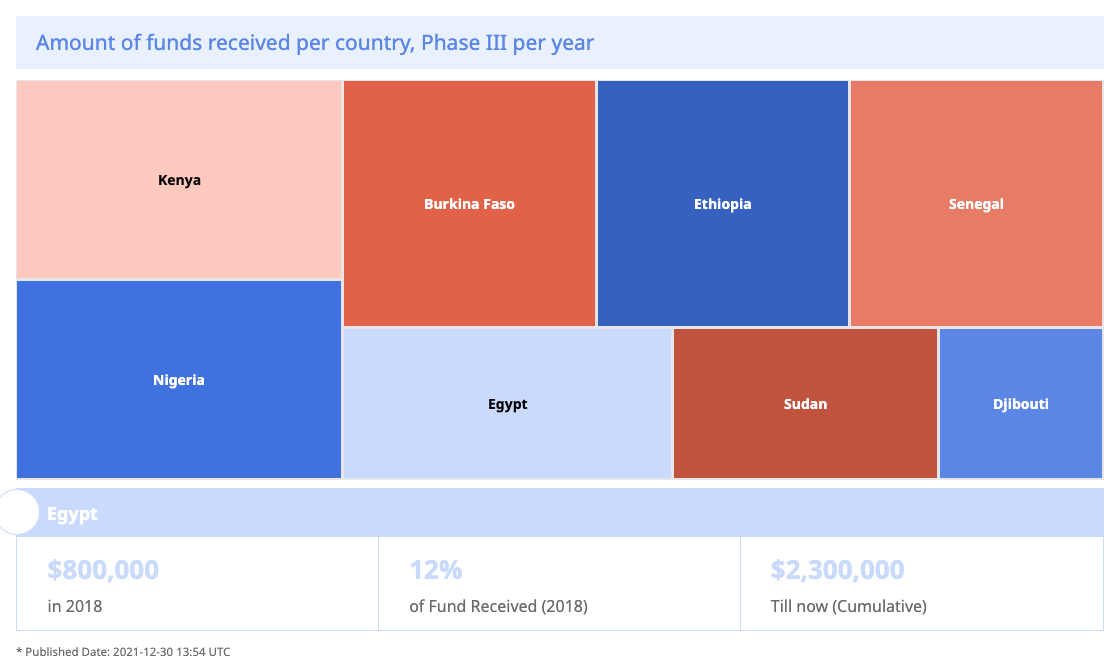|
Seth Davis, Programme Advisor, Community Systems Foundation Aditya Shankar, Programme Associate, Community Systems Foundation The second story in the DFA Monitoring series highlights how the software has been adapted to support regional initiatives, including the UNFPA-UNICEF Joint Programme on Female Genital Mutilation (FGM) and regional plans to eradicate multidimensional and child poverty in the Arab States region. UNFPA-UNICEF Joint Programme on Female Genital Mutilation The UNFPA-UNICEF Joint Programme on FGM is a United Nations initiative in 17 countries aiming to eliminate FGM practices in those countries. Since 2015, DFA Monitoring has assisted the Joint Programme in tracking the progress of global and national plans of Joint Programme, which largely focused on achieving target 5.3 of Sustainable Development Goal 5, Eliminate all harmful practices, such as child, early and forced marriage, and Female Genital Mutilation. Phase III of the Joint Programme aimed to increase regional participation in spreading awareness regarding the harmful effects of FGM to society. This includes the support of local governments and youth to spread the message of gender equality and political and legal accountability. DFA Monitoring was utilized to collect, compile and present country level data on key performance indicators of the Phase III plan. The system also helped to track the funding for country and local level activities. A common Regional Framework inherited by each participating country team (workspace) allowed for efficient reporting of country data which automatically gets aggregated at regional/global level. The graph above drawn from the UNFPA-UNICEF Joint Programme on the Elimination of FGM’s dashboard. The Dashboard is an output of DFA Monitoring, providing transparent reporting on the progress of efforts by the Joint Programme team to support the abandonment of FGM in target countries. In this instance of DFA Monitoring, focal points from each of the 17 countries report data on a set of standard key performance indicators. Data is aggregated by region. DFA Monitoring has provided both UNICEF and UNFPA a digital space for collaboration on planning and reporting results of Joint Programme activities, strengthening collaboration, building efficiency and promoting accountability and transparency. CSF truly hopes that these concerted efforts will lead to more sound actions, policies and meaningful outcomes to improve the lives of those women and children susceptible to harmful practices. Monitoring Multi-Dimensional Poverty in the Arab States Region In 2018, CSF presented DFA Monitoring at the 38th session of the Council of Arab Ministers of Social Affairs at the High Officials level in Sharm El Sheikh, Egypt. In that session, CSF successfully demonstrated an approach to configuring and deploying open source software to monitor progress on the plans to address multidimensional poverty across the Arab Region. And, a scenario in which League of Arab States (LAS) members could benefit from DFA Monitoring to plan and track progress of their own national plans.  ARAB VISION 2030: Eradicating multidimensional poverty to support Arab efforts in achieving the 2030 agenda. According to the Arab Multidimensional Poverty Report, which has key data that reports the national and regional progress against the Multidimensional Poverty Index, out of “286 million people living in … [these] countries, 116.1 million (40.6%) belong to poor households, of which 38.2 million (13.4%) live in acute poverty.” To address this, DFA Monitoring is being used by the League of Arab States to monitor the status of multidimensional and child poverty in the Arab region. Doing so has allowed LAS to focus on common goals, maintaining priorities and addressing plans which aim to alleviate child and multidimensional poverty by 2030. In this regard, the Arab Vision 2030 platform supports decision makers throughout the region to make more informed decisions that can lead to poverty reduction and the bolstering of happiness and healthiness of citizens. To ensure the sustainability of the initiative, the Development and Social policies Department at LAS, has organised several capacity building workshops in the last several years to train data entry and administrative focal points on the use of DFA Monitoring. It has enabled Arab League officials to see the value of DFA Monitoring and how it could support in monitoring other areas of national development planning. Conclusion DFA Monitoring’s versatility is best highlighted, not only by the different levels that it operates in but also in the range of sectors where it is deployed. With the UNFPA-UNICEF Joint Programme, DFA Monitoring assists in monitoring the abandonment of a pressing social issue that impacts the health and well-being of girls and women. With the League of Arab States, DFA Monitoring is supporting the monitoring of multidimensional and child poverty to support more awareness of the issue and to enable strategies to be developed to mobilize resources and improve the lives of citizens around the region.
1 Comment
|
Join the CSF data revolution webinar tomorrow!
COMMUNITY SYSTEMS FOUNDATION – EST 1963
+1 212 500 1335
data-driven sustainable development


